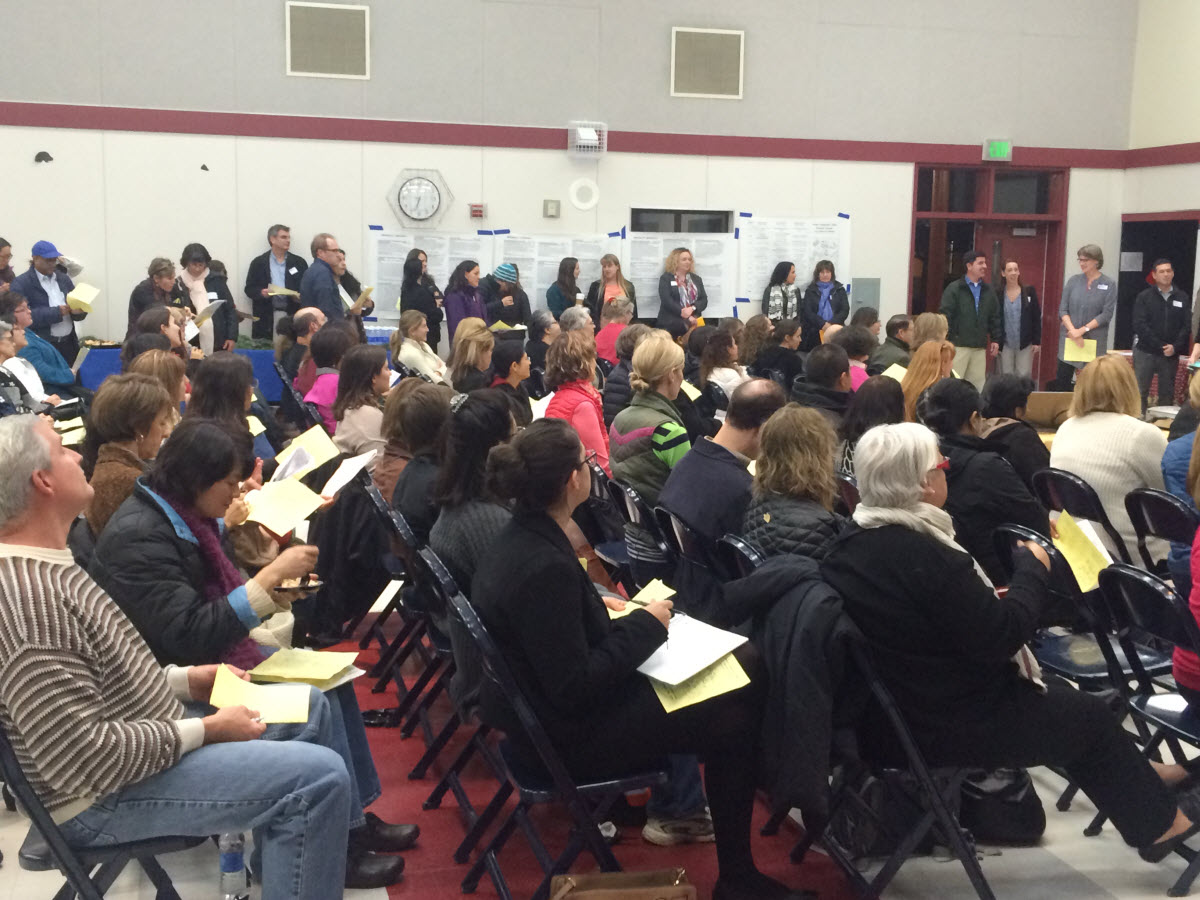

By Nicholas von Wettberg
According to Davis Joint Unified School District (DJUSD) Associate Superintendent Bruce Colby, the amount of funding the district receives when compared to others throughout the state is “about average.”
Judging, though, by Tuesday’s full turnout of parents, teachers, staff, students and local dignitaries inside the Harper Middle School Multipurpose Room for the 4th Annual Parent Engagement Night, the Davis community and its commitment to education appears anything but average.
The event organizer, district manager of student achievement Kitty Hudson-Cawley, addressed the crowd of well over one hundred people, thanking them for their participation and tireless efforts on behalf of the students.
“I want to say you are the people that we are going to get direction for where our district is going to be headed,” Hudson-Cawley told the audience. “Where does our community want to go with education? Where do we need to love our kids, more, serve them better?”
Comprised of 28 different Breakout sessions, each contributor was given the chance to attend three 30-minute-long presentations. Ending the evening’s schedule were get-togethers with school community members, which included a number of school principals.
“When parents and community get involved in a student’s life, in a child’s life, you know you’ve got the foundation for solid learning, that they’re going to be loved and supported,” Hudson-Cawley said.
She added: “That’s parent engagement, and if parents know what’s going on in the classroom and teachers have a chance to be with parents you get this dynamic flow happening where information doesn’t just stop at the classroom door.”
Part of the revised California Budget funding formula from 2013-14 requires districts to provide data in its Local Control Accountability Plan (LCAP) for each of the state’s eight priority areas, one of which is parental engagement.
Every topic explored in the Breakout sessions was in some way connected to the goals expressed in the plan.

In fact, one of the Breakout sessions for the evening tackled the ins and outs of the district’s implementation of the LCAP, which, according to the event syllabus, “is focused on professional growth, assessment, climate, and parent engagement, and how you can make contribute to this important work.”
Another LCAP priority area, student engagement, was the topic for discussion in a number of presentations, making it the ideal time for teachers to get valuable feedback about students from those who know them best.
“Does a child feel that they can do the work that’s in front of them, that they’re being asked to do?” Hudson-Cawley said. “Do they feel like they’re welcome in their class when they walk in? Do they feel like, wow, this is really interesting?”
School climate, or the feelings and attitudes brought on by a particular environment, is related to the program through Goal 6 of the LCAP.
“The more we can all feel like this is our place to be, our place for our kids to be, that it is a really healthy and warm place, connecting, those are the places where kids are going to learn, so we’re always trying to look at climate,” said Cawley-Hudson.
One of the Breakout sessions geared toward school climate and entitled, “School Start Times & Teens,” dealt with an issue that has strong implications for the future as the district pushes forward in its plan for 2017-18 to implement starting times beginning a half hour later.
DJUSD Associate Superintendent Matt Best gave the presentation to the room full of eager listeners. After citing the 2014 policy statement from the American Association of Pediatrics (AAP), in which it recommends that kids receive no less than 8.5 to 9 hours of sleep daily, one parent asked if schools had tended to start earlier in the past 15 years (since the advent of later start times).
Best’s answer was that it has been only since 2000 that later start times have been functioning in places around the country, most notably Minnesota, but prior to that there was another 15 years or so of sleep research leading up to that point.
Another parent in the session noticed that, in its recommendations, the ADA (average daily attendance) funding requested that health professionals actively educate students and parents on the facts about adolescent sleeping habits.
“I don’t even know if this is possible, but is DJUSD in any way reaching out to our local health care communities to sort of co-manage this education?” she asked. “I think it’s fantastic the idea that a teen, or a pre-teen, would hear this information from people other than Mom and Dad, or other than their teachers. But I’m curious if that enters into the conversation.”
Best’s response was that there had been meetings with Kaiser and Sutter, and their goal was to share the information in one common voice so the message gets through loud and clear.
The parent suggested that the communication process begin before kids become teenagers so the message gets passed on more frequently.
Best explained that their junior high school health programs had already begun to accumulate data through sleep unit logs, and to study the effects of deprivation.
Some of the remaining topics touched on during Parent Engagement Night were student achievement (the amount of learning/testing being done) and providing basic services (technological) like Chromebook laptop computers.
